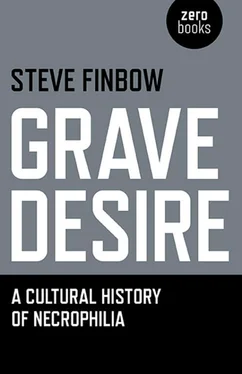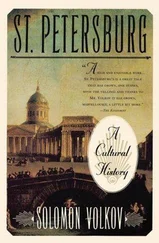It’s interesting to note that Marx and Engels collaborated on this essay in Paris in 1844, a few months before Bertrand’s necrophiliac atrocities escalated.
On the 25 thof May 1913, Kürten burgles an inn on the Wolfstrasse in Köln, he searches the ground floor and, finding nothing worth stealing, walks up the stairs to where the family sleeps. He looks in the rooms and in one finds a 10-year-old girl—Christine Klein—sleeping under a feather blanket. He grabs the girl by the throat and strangles her, excited by the girl’s pathetic struggling. The girl passes out and Kürten strips her and pushes his fingers into her vagina. He then takes out a pocketknife, holds the girl’s head back and slashes her throat. He listens to the blood pump out and drip onto the carpet, some of it splashes across his hand in rhythmic arcs. As she dies, he bites her tongue, punctures her throat twice with the knife. It takes three minutes for her to die and he leaves her body on the bed and returns to Düsseldorf. The next day, he goes back to the scene of the crime and drinks beer in a café with a view of the inn, listening to people talk about the crime, the horror of others excited him and the murder of the girl stimulated his pathological sadism.
In the same year, the literary journal Arcadia published Franz Kafka’s ‘Das Urteil’ (‘The Judgement’) in which a son grapples with the legacy and disappointment of his bullying and disapproving father. The old man eventually condemns his son to death by water, proclaiming, ‘So now you know what else there was besides yourself; up till now all you knew was you! You were an innocent child, really, but it would be truer to say you were a veritable fiend!’ [123] Franz Kafka, Metamorphosis and Other Stories, trans. Michael Hoffman (London, 2007), p. 49.
The son runs through the city streets to the river, leaps over parapets and clings to the rails until he weakens and drops, and ‘At that moment, a quite unending flow of traffic streamed over the bridge.’ [124] Metamorphosis and Other Stories, p. 50.
Kafka admitted to Max Brod that the last line meant a ‘violent ejaculation.’ [125] Max Brod, Franz Kafka: A Biography, trans. G. Humphreys Roberts and Richard Winston (New York, 1995), p. 129.
Kürten’s inaugural murder, the primal escalation of his death lust either re-enacts the sexual onslaughts his father perpetrated on his mother and sisters, or protects the young girl from further harm. Police found a 9cm-long cut on the girl’s throat but no signs of phallic rape. After digitally penetrating her, Kürten had incised a new unpenetrated vagina on the girl’s neck, the blood coursing over the bridge of his hand, as a ‘violent ejaculation,’ the blood as metaphor for his own compulsive masturbation, the site and sight, the feel of his own ejaculative emission while fantasizing about the event now actualized.
In 1920, with Kürten in prison for arson and theft, Düsseldorf was at the forefront of the German General Strike as part of the Ruhr uprising, a left-wing and communist workers’ revolt. Over 300,000 miners and other workers took control of Düsseldorf. The Freikorps—a paramilitary militia—murdered 45 striking miners on the 15 thof April 1920. Adolf Hitler, in a speech on 13 July 1934, included the Friekorps in his list of ‘pathological enemies of the state,’ revealing that he had read a diary from 1918 that provided: ‘…an insight into the mentality of people who, without realizing it, have found in nihilism their ultimate creed. Incapable of any real cooperation, determined to take a stand against any kind of order filled by hatred of every authority as they are their uneasiness and their restless this can be quelled only by their permanent mental and conspiratorial preoccupation with the disintegration whatever exists at the given time.’ [126] Adolf Hitler, The Essential Hitler: Speeches and Commentary, trans. Max Domarus (Wauconda, 2007), p. 262.
In 1921, a year after the release of expressionist film The Cabinet of Dr Caligari in which the somnambulist Cesare abducts and murders young women, Kürten left prison, married and worked in a factory where he became a political activist involved in trade unionism. In the midst of the Weimar Republic’s political violence, his own pathological revolution fell into remission but, in 1925, he was imprisoned again for theft and arson. The fourteen years of the Weimar Republic—‘a tumultuous interregnum between disasters’ [127] Peter Watson, The German Genius, (London, 2010) p. 568.
—instituted state violence, authoritarianism, and propaganda. A civilization of repression, aggression dislocation—subjects of special interest to Theodor Adorno, Herbert Marcuse, and Erich Fromm, all members of the contemporaneous Frankfurt School. Fromm would go on to write extensively about necrophilia and the necrophilious character.
During his spell in prison, Kürten’s sadistic fantasies intensified, on the 9 thof February 1929, they spilled over into lust murder; this time, Rosa Ohliger—an eight-year-old-girl—would be his victim. He had perfected the attack with a series of assaults on women in the days leading up to the murder, stabbing one woman twenty four times. Düsseldorf police discovered her body half hidden under a hedge, they found thirteen stab wounds on her body and evidence that the killer had tried to burn it. Kürten had again returned to the scene and orgasmed as he had when setting fire to the young girl’s body. During the autopsy, doctors found knife wounds and semen traces in and around the girl’s vagina and ejaculate on her underwear.
Kürten killed the girl ten days after the first publication of Erich Maria Remarque’s Im Westen nichts Neues (All Quiet on the Western Front) portraying the trauma experienced by soldiers in the First World War, the alienation they felt in trying to adapt to society, and the deprivation they faced in a time of economic depression. In prison throughout most of the war, Kürten must have felt an existential if not ethical kinship with these soldiers, traumatized as he was by his father, a criminal alienated within society, thieving to make a living.
If he did feel empathy towards the soldiers, he felt nothing for the ordinary citizens (and animals) of Düsseldorf. On the 14 thof February—as Al Capone’s men were using machine guns and shotguns to mow down members of Bugs Moran’s gang in the St Valentine’s Day massacre in Chicago—in Flingern, Kürten stabbed a 45-year-old mechanic 20 times and watched him bleed to death. He returned later and spoke to police investigating the crime.
On 21 August, Kürten heard the ‘backs on the street which cry out for the knife,’ bidding passers-by in Lierenfeld a ‘Good evening,’ and then stabbing them in their backs and in their ribs. At 10:30pm, two days later, in Flehe, Gertrude Hamacher (aged five) and Louise Lenzen (14) were walking home together after the annual fair. Kürten emerged from the trees, gave money to Louise and asked her to buy him cigarettes. When Louise left, Kürten strangled Gertrude and cut her throat with a knife. When Louise returned, Kürten pulled her into the bushes, strangled and then decapitated her. The next day, after propositioning a servant girl—Gertrude Schulte—for sex, he stabbed her and fled. The girl survived and gave the police a description of the ‘pleasant-looking’ man.
In September 1929, Kürten raped and beat to death Ida Reuter; on the 12 thof October, he did the same to Elizabeth Dorrier; and on the 25 thof October, he attacked Frau Meurer and Frau Wanders with a hammer. On the 9 thof November, a local newspaper received a letter with a map showing the whereabouts of a dead child—police found the strangled and mutilated body of five-year-old Gertrude Albermann outside an abandoned factory. To avoid capture—or to shift the dynamics of his orgasms—over the next six months, Kürten changed his modus operandi, baffling police and terrorizing the city.
Читать дальше












